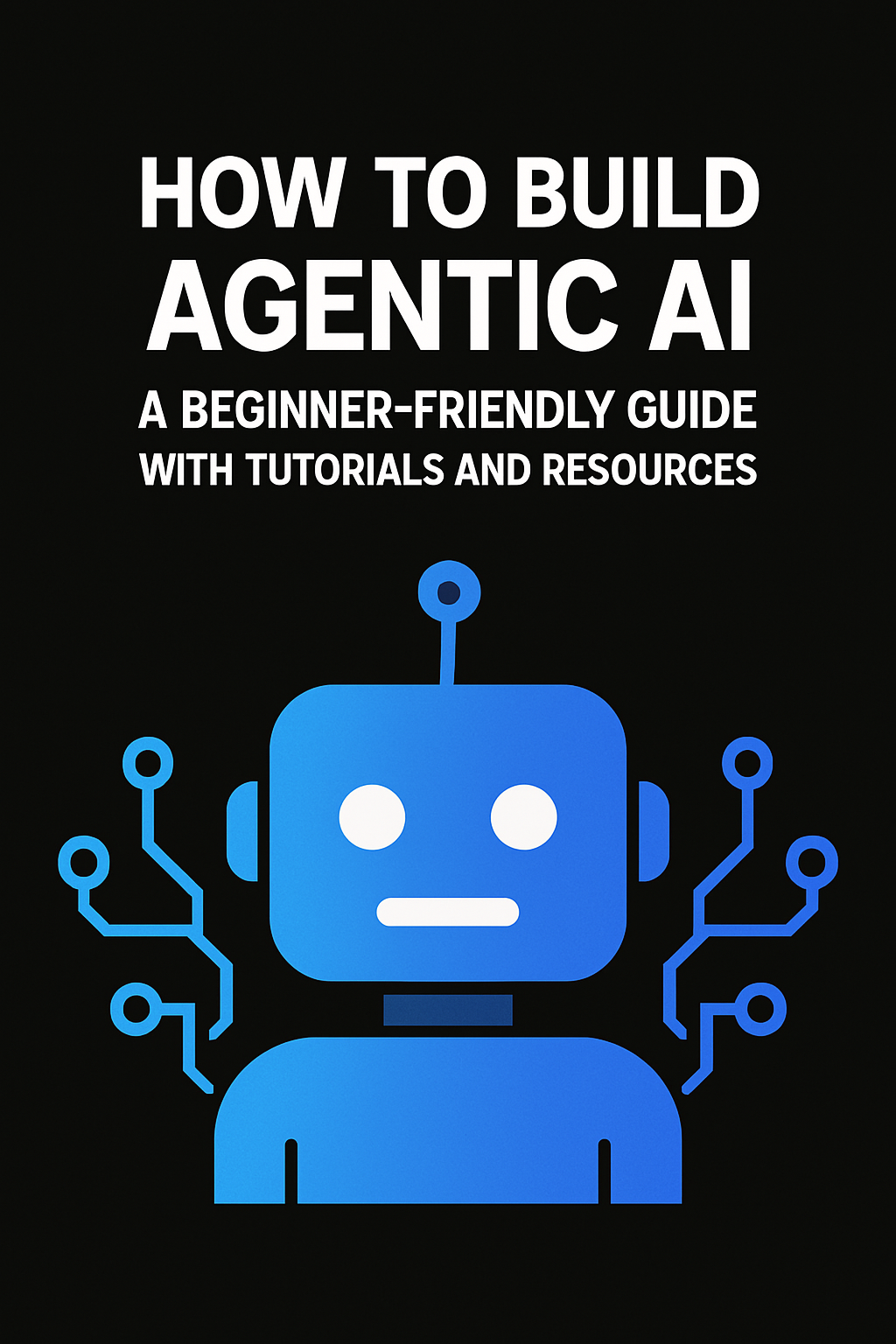Agentic AI is one of the most exciting developments in artificial intelligence today. Instead of just responding to prompts like traditional models, agentic systems are designed to take initiative. They can plan, make decisions, and perform tasks autonomously, often mimicking how humans approach goals.
In this guide, we’ll break down what Agentic AI is all about and walk you through the steps of building your own agentic system, even if you're just getting started. We’ll also include links to useful tutorials and video content to help make the learning process smoother and more hands-on.

What is Agentic AI?
At its core, Agentic AI refers to systems that can act with agency; meaning they don’t just wait for instructions. They perceive their environment, reason about it, and take actions to accomplish goals. You might have seen this in action with advanced AI tools that can autonomously browse the web, schedule meetings, or run complex workflows without step-by-step instructions.
Think of it like giving your AI a mission instead of a task.
Step-by-Step Guide to Building Agentic AI
1. Get Clear on Your Agent's Goal
Start with one simple question: What do you want your AI agent to do?
A few examples:
- Automatically answer customer service emails
- Summarize long documents and take actions based on the content
- Monitor news sites for updates and compile reports
Having a clear goal will guide every decision you make, from the tools you choose to the data you feed it.
2. Set Up Your Workspace
You’ll need a few tools and libraries to get started:
- Python: It’s the go-to language for AI.
- Jupyter Notebooks (optional but helpful for experimenting)
- Key Libraries:
- openai or transformers (for language models)
- LangChain (great for building agent workflows)
- requests, selenium or playwright (for web automation)
You can install everything with pip:
pip install openai langchain requests selenium
3. Build the Perception Layer
This is how your agent gets information from the world. It could be reading a web page, listening for emails, or pulling data from an API.
Here’s a simple example using the requests library to fetch data:
import requests
def get_news():
response = requests.get("https://api.currentsapi.services/v1/latest-news")
if response.status_code == 200:
return response.json()
return None
4. Add a Reasoning Engine
This is where the magic happens. Once your agent gets data, it needs to understand what it means and decide what to do next.
A simple example using OpenAI:
from openai import OpenAI
def make_decision(prompt):
client = OpenAI(api_key="your-api-key")
response = client.completions.create(
model="gpt-4",
prompt=prompt,
max_tokens=100
)
return response.choices[0].text.strip()
You can feed it prompts like: “Based on this article, what should we do next?” and it will respond with a plan.
5. Implement an Action Layer
Now that the AI knows what it wants to do, it’s time to make it happen. This might mean:
- Sending an email
- Posting to social media
- Scheduling an event
- Clicking around on a webpage
Here’s a quick Selenium example:
from selenium import webdriver
browser = webdriver.Chrome()
browser.get("https://google.com")
search = browser.find_element("name", "q")
search.send_keys("Agentic AI examples")
search.submit()
6. Add a Feedback Loop (Optional but Powerful)
One of the key features of true agentic systems is that they learn over time. You can start by building a simple loop where the agent checks if its actions led to the desired outcome and adjusts accordingly.
That could mean:
- Logging what it did and whether it succeeded
- Asking a human for feedback
- Changing its prompt or behavior based on outcomes
Real Video Tutorials to Follow Along
To make your learning even easier, here are some beginner-friendly YouTube videos to help you dive deeper:
- Building Agentic AI Free Course (YouTube) - a foundational walkthrough for beginners
- AI Agents from Scratch | Full Course - covers theory and practice in depth
- AI Agents: From Zero to Production in 35 Minutes - a fast-paced practical demo
- Master Agentic AI with SuperAgentX - learn to use multi-agent frameworks
Helpful Resources and Reading
- LangChain Documentation: https://docs.langchain.com
- Agentic RAG Tutorial (DataCamp): https://www.datacamp.com/tutorial/agentic-rag-tutorial
- Top Agentic AI Tools & Frameworks (Medium): https://medium.com/@maximilian.vogel/mastering-ai-agents-the-10-best-free-courses-tutorials-learning-tools-46bc380a19d1
Final Thoughts
Building an agentic AI system might sound complex, but when you break it down into small pieces, it's totally doable—even for beginners. Start with a simple task, get familiar with the tools, and gradually introduce more advanced features like feedback loops and multi-agent collaboration.
The future of AI isn’t just reactive. It’s proactive. And with the rise of tools like LangChain, GPT-4, and autonomous frameworks, anyone can now build intelligent systems that don’t just respond—they act.